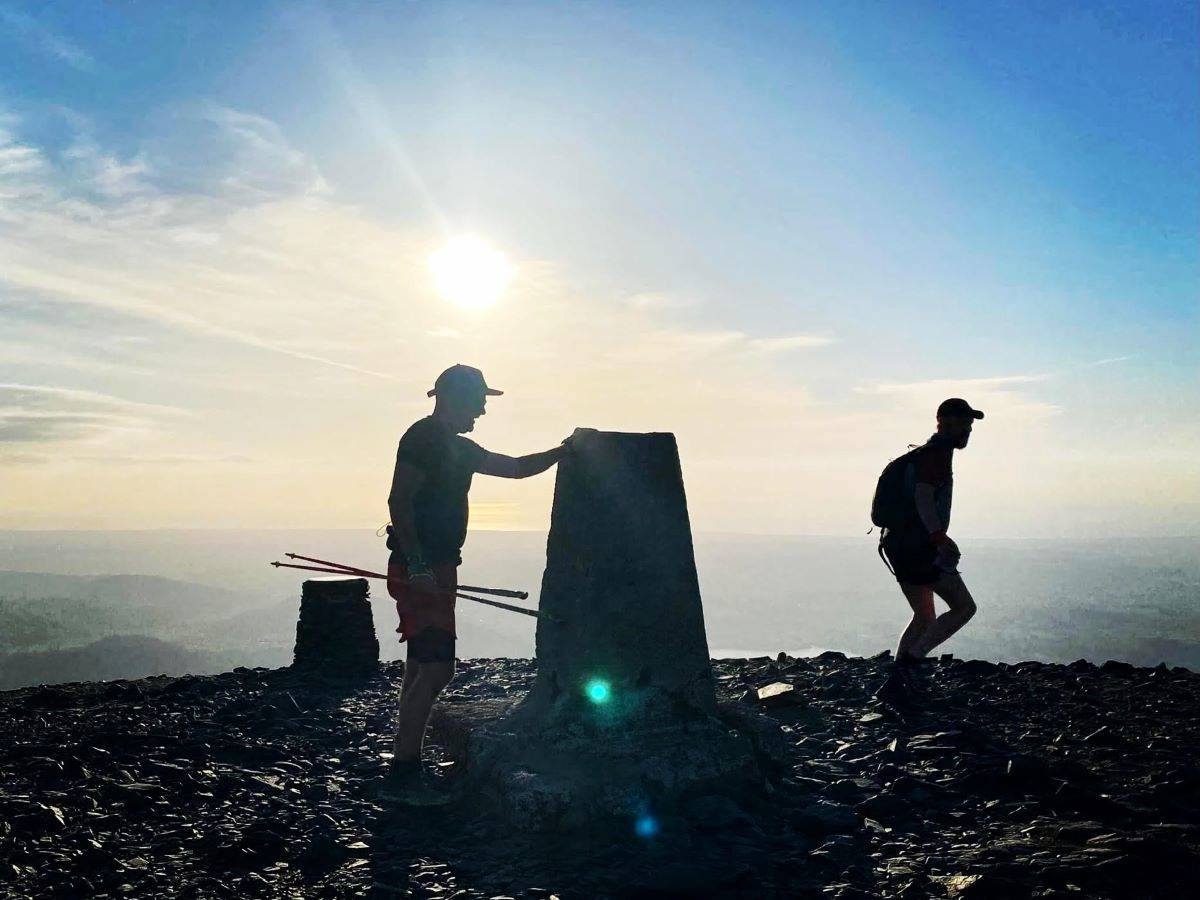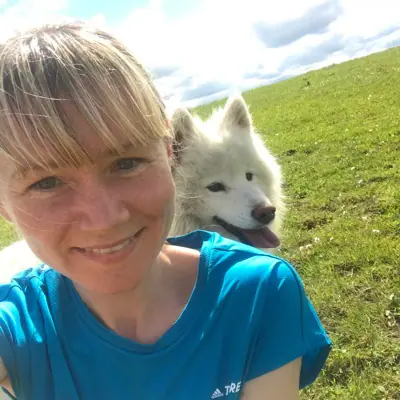[Editor’s Note: We’re excited to debut It Takes a Village, a new column on iRunFar about off-road running communities around the world. Each month, we hope to feature a community and how they help bind people and places in shared passions. Be sure to get in touch with the column’s author, iRunFar editor Sarah Brady, to let us know about your local running community!]
Originating in the wilds of England’s Lake District fells, and now spread across the four corners of the globe, there exists a unique and highly respected club. The criteria for a lifetime membership is that you must traverse on foot the 42 peaks of the Bob Graham Round — 66 miles with 27,000 feet of climbing on highly technical terrain — within 24 hours.
Among the youngest members to complete this brutal initiation was the then-17-year-old Hannah Saville, who did so in a time of 23 hours and 30 minutes in June of 2015. The oldest person on record to be admitted to date was Kenneth Taylor, who completed his round in 2018 in a time of 22:21 — while 71 years young.
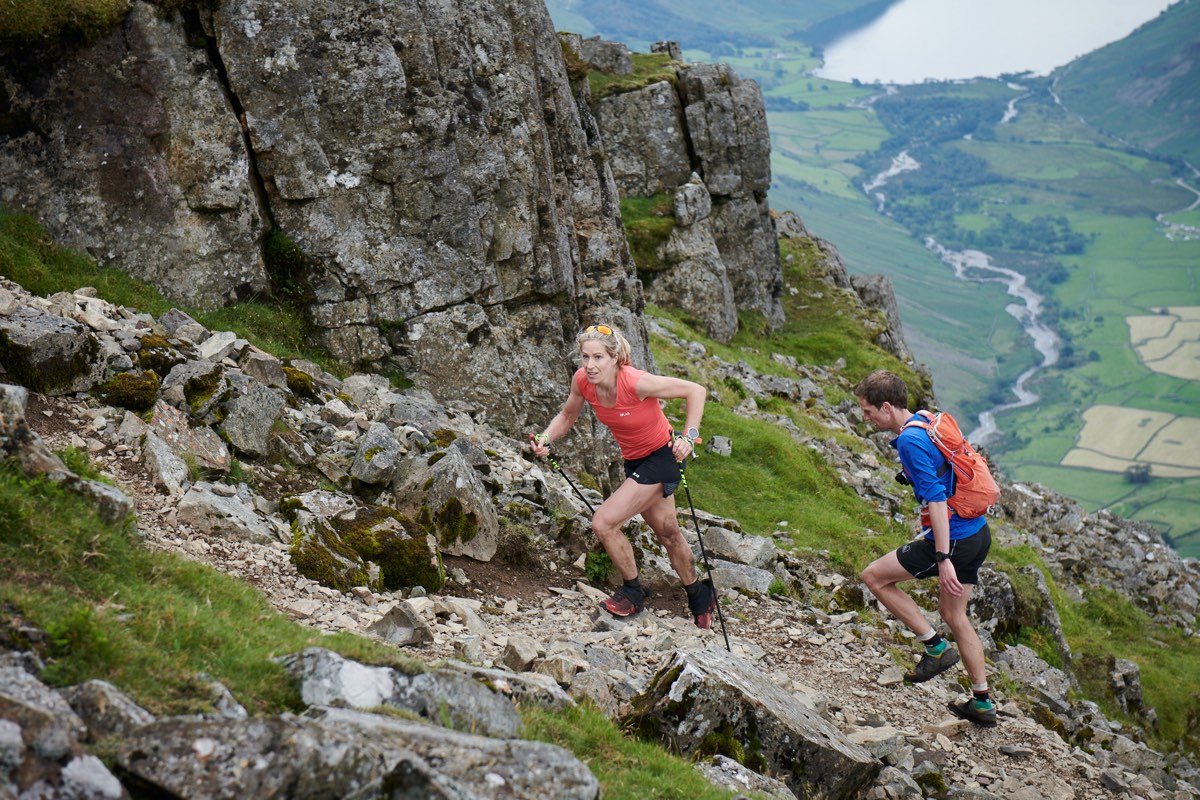
Beth Pascall, the fastest woman to have completed the Bob Graham Round, in a time of 14 hours and 34 minutes. Photo: Sam Benard
The Bob Graham 24-Hour Club was first formed in 1971, by the then eight runners who had successfully completed the round. Since then, it has evolved from a fairly informal group to a more defined organization, with a committee, website, and extensive list of members.
The rules of the club may have been more of an unspoken understanding back in 1971, but by now it is made clear on their website that there is an expectation to give back: “It is one of the traditions of the club that existing members will assist their aspiring colleagues by pacing their attempts.” Or, as their note on spirit, tradition, and ethics simply puts it: “You help people, people help you.”
What Are Rounds?
Rounds have long been a big part of the mountain running tradition in the United Kingdom and Ireland. Most operate on the same premise, the goal being to navigate a setlist of peaks in a circuit, in a particular order and often within a set time — most commonly within 24 hours.
Each has its own ethos and set of rules on the level of support that’s allowed, but it is rare to complete a round without at least a bare crew. As the routes tend to be off-trail, with no fixed route, course knowledge is handed down by word of mouth, with invaluable tips on certain deer tracks or crags to look out for being exchanged in car parks or pubs after local races.
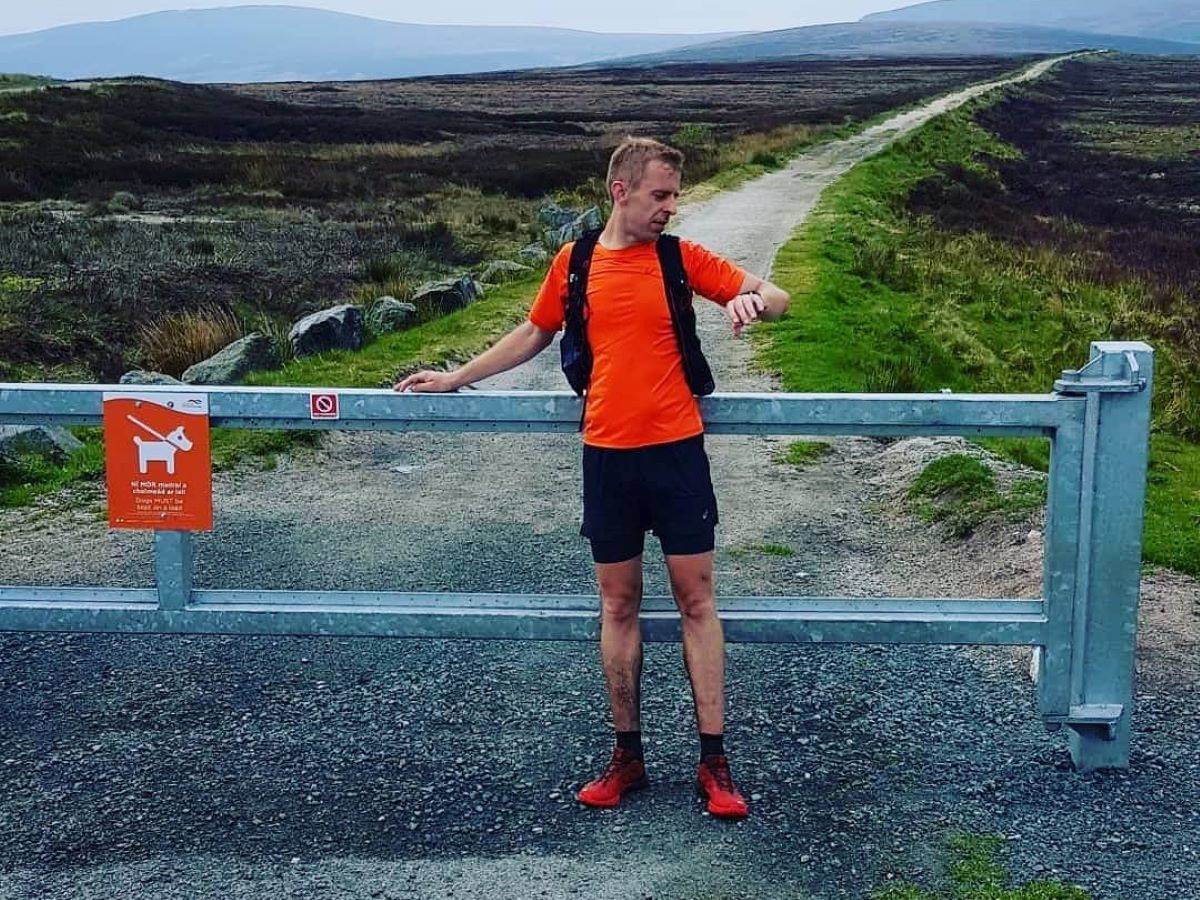
Gavin Byrne, male record holder (15:04) of Ireland’s Wicklow Round, at the finish. Photo: Richard Nunan
Fell Running Clubs in the North of England
The Lake District, and the North of England generally, is home to a thriving fell running club scene. Singlets from clubs such as Ambleside AC, Kendal AC, and Black Combe Runners are worn proudly by hardy racers battling it out on the fells.
As well as competing against other clubs, runners are encouraged to better themselves by racing against their fellow club members, with many clubs organizing an annual race, or series of races, to act as their club championships.
Clubs are in turn affiliated with the larger Fell Runners Association, the governing body for the sport of fell running.
Fell running differs from trail running in that it is run primarily off trail, on rugged open mountain terrain. Often there is no fixed route and it is up to the runner to decide on the fastest route between two points. Classic fell races are a popular format, and generally involve a race up and down one mountain, or fell. Learn more about this sport in our two-part guide: check out fell running, part 1 and fell running, part 2.
The Bob Graham 24-Hour Club
It is within their local running clubs that many aspiring rounders first form their support network for training for and completing the Bob Graham Round. Or, before all of that, it is through the conversations that take place between clubmates that many highly suggestable runners first set their sights on this ambitious target.
One rule of the Bob Graham Round is that you must have a witness accompany you to every peak in order for the round to be ratified. Nowadays with GPS trackers, this is more about safety than it is about verification, but either way, it feeds into the community and combined effort aspect of the Bob Graham Round. No one can do this on their own; it takes a village.
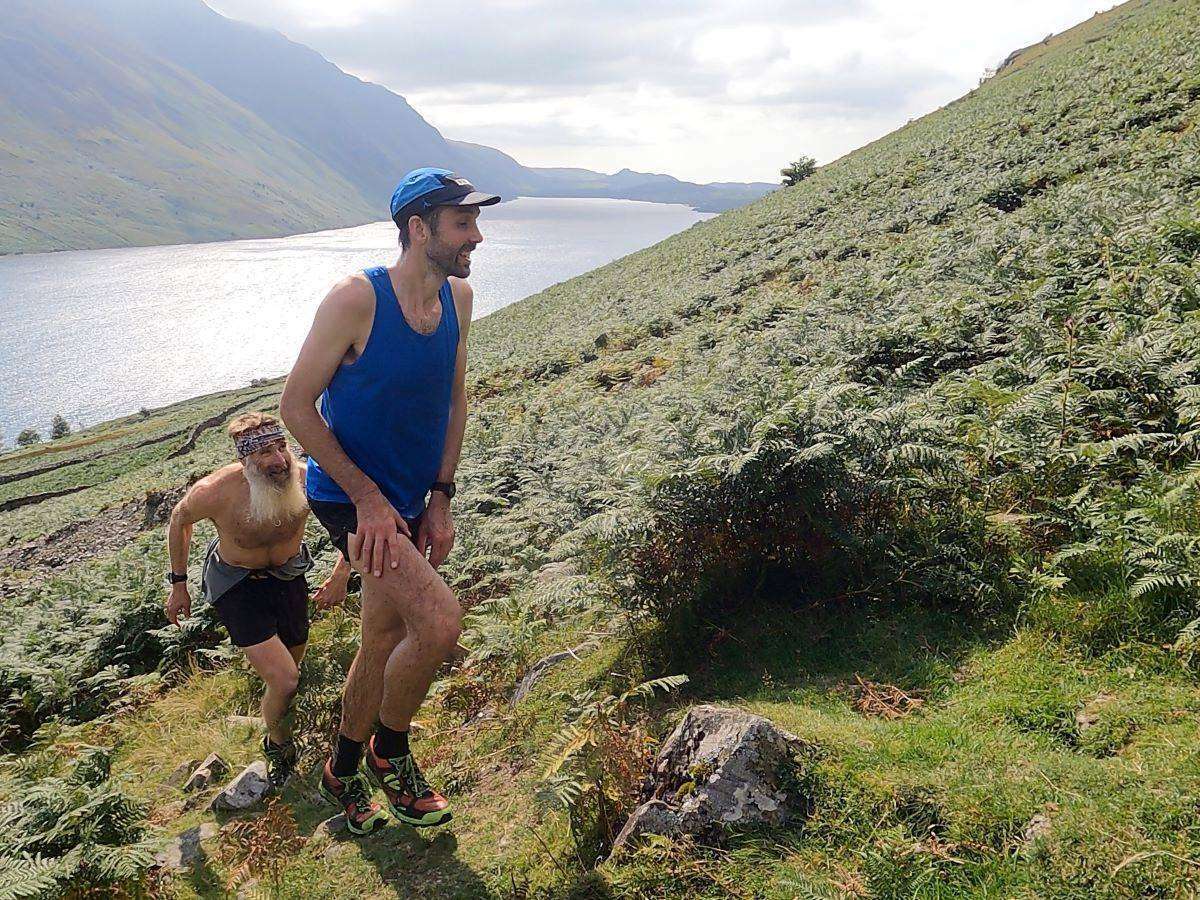
Finlay Wild (right) climbing the fell called Yewbarrow on his Bob Graham Round, with support runner Andrew Schofield. Photo: Paul Wilson
Bob Wightman has been Membership Secretary of the Bob Graham 24-Hour Club for 10 years. Although much of the conspiring for round attempts and arranging of pacers is now done within individual fell running clubs, he is still often the first point of contact for aspiring rounders.
He told iRunFar, “What I tend to suggest is that if you’re not familiar with the round, offer to help out, but be prepared to get off the hill yourself if you can’t keep up. You try to become familiar with it [by helping], and then hopefully get some payback for it!”
On the expectation to help others, especially those who might be outliers to the running club scene and not have their own support, Wightman said, “People who live local will offer to help strangers. You see some people, their names pop up quite regularly in the list of supporters. Roughly 80% of members have helped out on other successful rounds. The number might be greater on unsuccessful rounds, but we never hear about those!”
Wightman continued, on the origins of the tradition, “In the earlier attempts and successes, people were helping out because it was locals attempting it. Going back to the 1970s, people didn’t travel around as much as they do now. So, the tradition started off early on. It’s as much for safety really. We occasionally get people saying they want to do it solo, and it turns out they have no fell running experience.
“One of the things about having pacers and witnesses is, it sort of removes the spontaneity, we’re not encouraging people to just ‘go off and do it.’ We want people to know that there’s a bit more to it.”
The community aspect and the sense of belonging in the Bob Graham 24-Hour Club are bolstered by the club’s tradition of holding a biannual dinner and dance, which welcomes all members and their partners. At the dinner, certificates for recent round completions are handed out. It is an opportunity for new members to mingle with older members, trading stories and comparing experiences on the route, which has evolved down through the years, with rounders learning from the experiences and mistakes of those who went before them.
It is also an opportunity for older, retired, or injured members to continue to be a part of the community, even if unable to tackle the fells as they once could.
Wightman said, of the dinner attendance, “When it started, there was so few. Maybe eight years ago, I think we had 350. Last year there was about 220. That’s sort of typical.”
It is another tradition of the club that any money raised from hosting the dinner goes to charities working to help disadvantaged children to enjoy the outdoors. At present the funds are allocated between three such charities based in the Lake District.
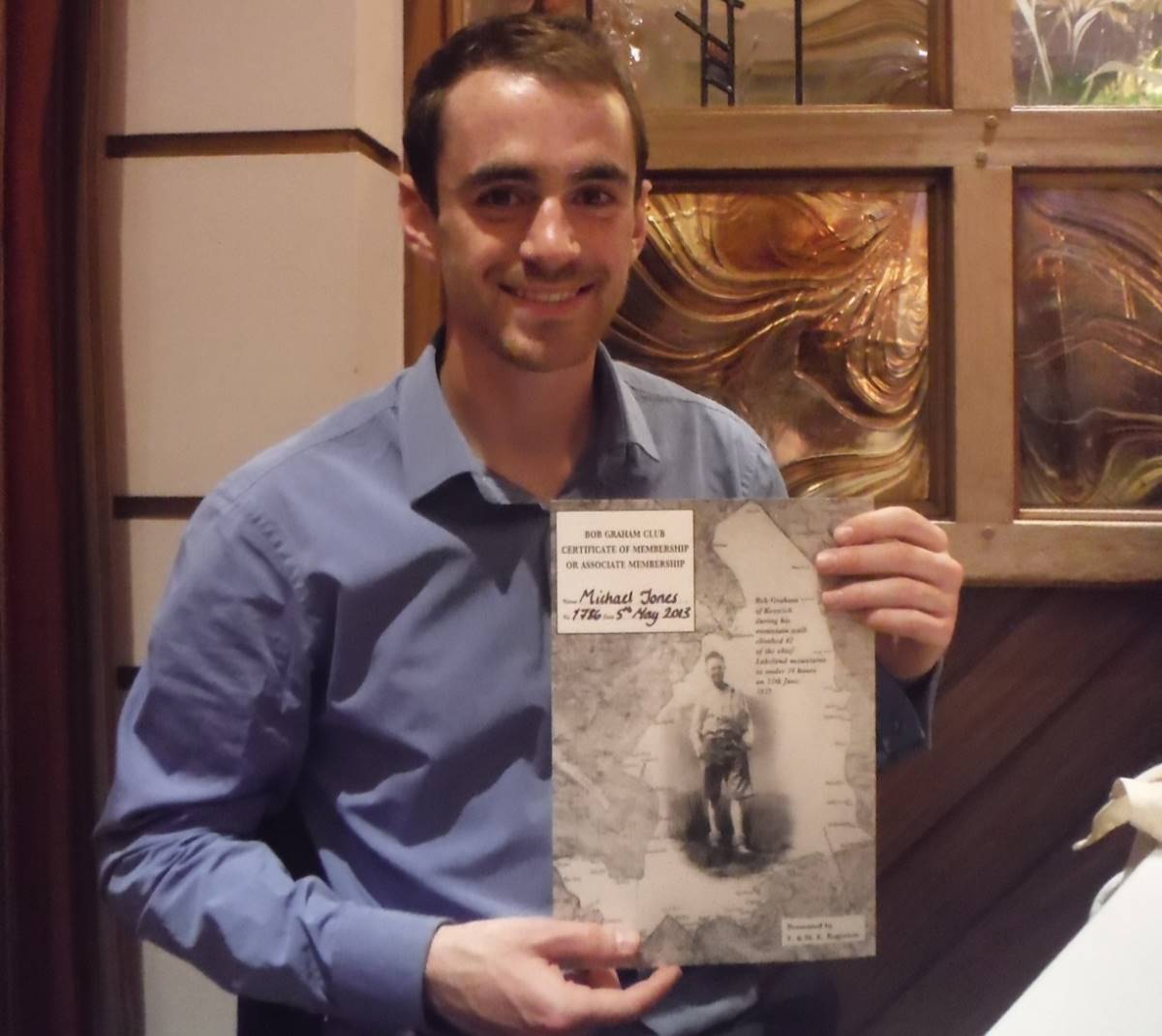
Club member Michael Jones receiving his certificate of membership at the dinner and dance in 2013. Photo courtesy of Michael Jones.
Fiona Lynch and the Dark Peak Machine
One running club in particular that has played a part in many people’s Bob Graham stories is Dark Peak Fell Runners. The Sheffield (Yorkshire) club has a little over 300 members and they claim, “The club thrives on minimal organisation and if you have a slightly anarchic sense of humour and an appetite to compete in unusual events, you will feel at home with people of a similar disposition.”
Going back to the club’s origins in the 1970s, Dark Peak Fell Runners have had a tradition of a number of members pursuing the Bob Graham Round together. This started out as a logistical solution to share transport, as they were one of the few clubs from outside of the Lake District to take an interest in the round.
One Bob Graham 24-Hour Club member we spoke to, Fiona Lynch from Tuam, Ireland, now based in Manchester, England, described how befriending another runner at a fell race launched her Bob Graham Round journey. That runner was Jim Paxman of Dark Peak Fell Runners.
“[Dark Peak] have a club jamboree every year in June, where a number of their club members who are interested in doing the Bob Graham will make an attempt together. They’ll all have their own individual supporters and everything, but they’ll do it as a group start. There’s usually about four or five of them. It’s known locally as the Dark Peak Machine. And they always adopt someone from outside of Dark Peak, who might not be in a fell running club, and bring them along with them.
“It gives you access to all the experience and a group of people who’ll be training the same year as you, and you kind of learn the ropes through that. Jim kept an eye on me, and he said: ‘I think if you keep going the way you are, and if you’re interested in the Bob Graham, give me a shout and I’ll see if I can get you in on the machine one year.’”
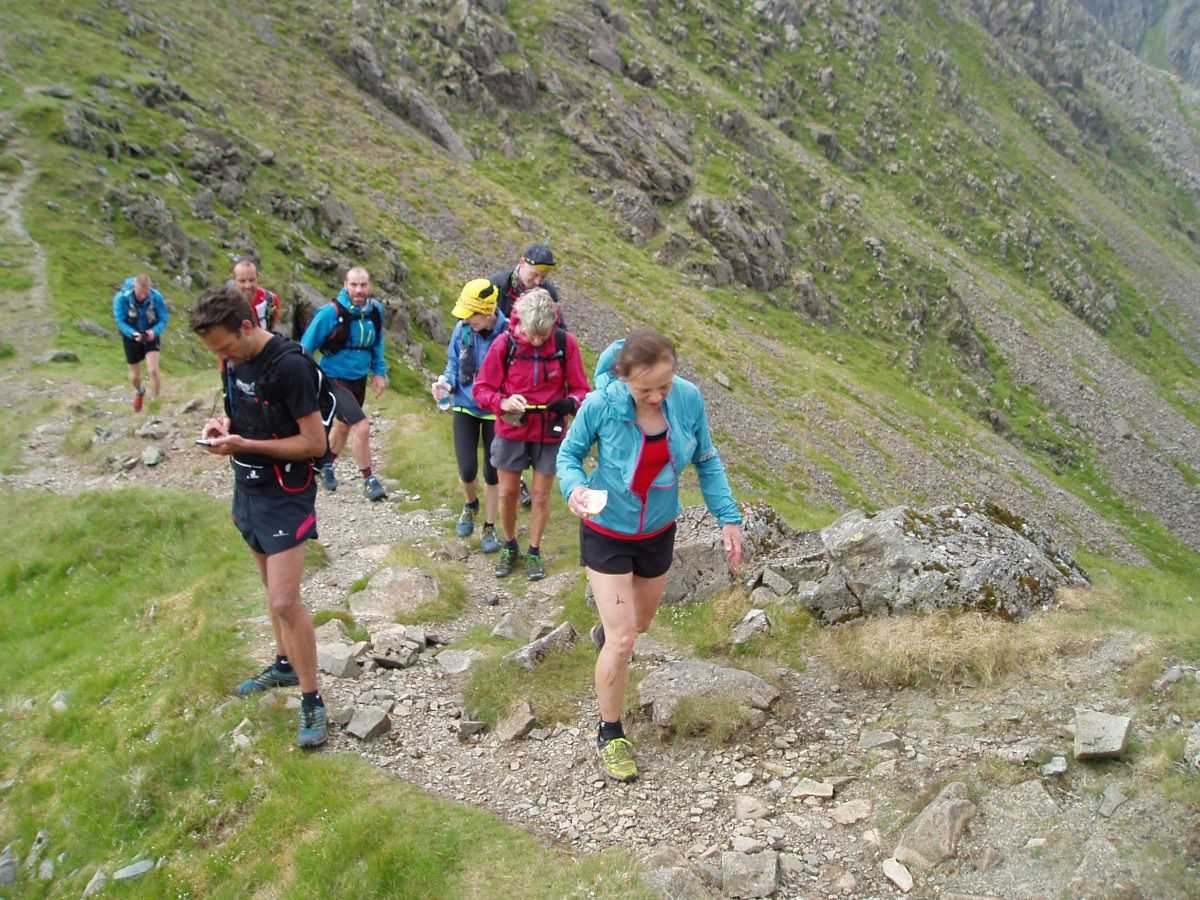
Fiona Lynch (right) on leg 4 of her Bob Graham Round, having picked up several supporters along the way. Photo courtesy of Fiona Lynch.
Paxman encouraged Lynch to put her name down for support on a club jamboree. She was given leg 2, a nighttime section, for support and while recceing it she got to know others out on the route who are now among her best friends.
While there is no expectation within Dark Peak to support other people’s attempts, Lynch was happy to pitch in and get involved: “You get involved in other people’s attempts and that’s how you learn it. … You give up your time but you’re getting so much from it, personally. You’re meeting people, you’re pushing yourself and you do have that sense of responsibility. No one takes on supporting lightly. … And then you’ve got your network. So, when it’s your turn to go, you put the feelers out and the offers start to come in.”
Paxman’s take on the Dark Peak Machine was, “What I love about the Dark Peak [Bob Graham] weekend, or supporting any round for that matter, is the communal endeavor where so many of us go to so much trouble to help the contenders experience so much pain to achieve something that is completely useless and then we go to the pub!”
Lynch successfully completed her Bob Graham Round in 2018 and has since gone on to complete the 236-mile Dragon’s Back Race, a stage race run over six days across rugged Welsh mountains, and the nonstop 268-mile Spine Race, which runs the length of the famous Pennine Way, England’s first National Trail, in the depths of winter.
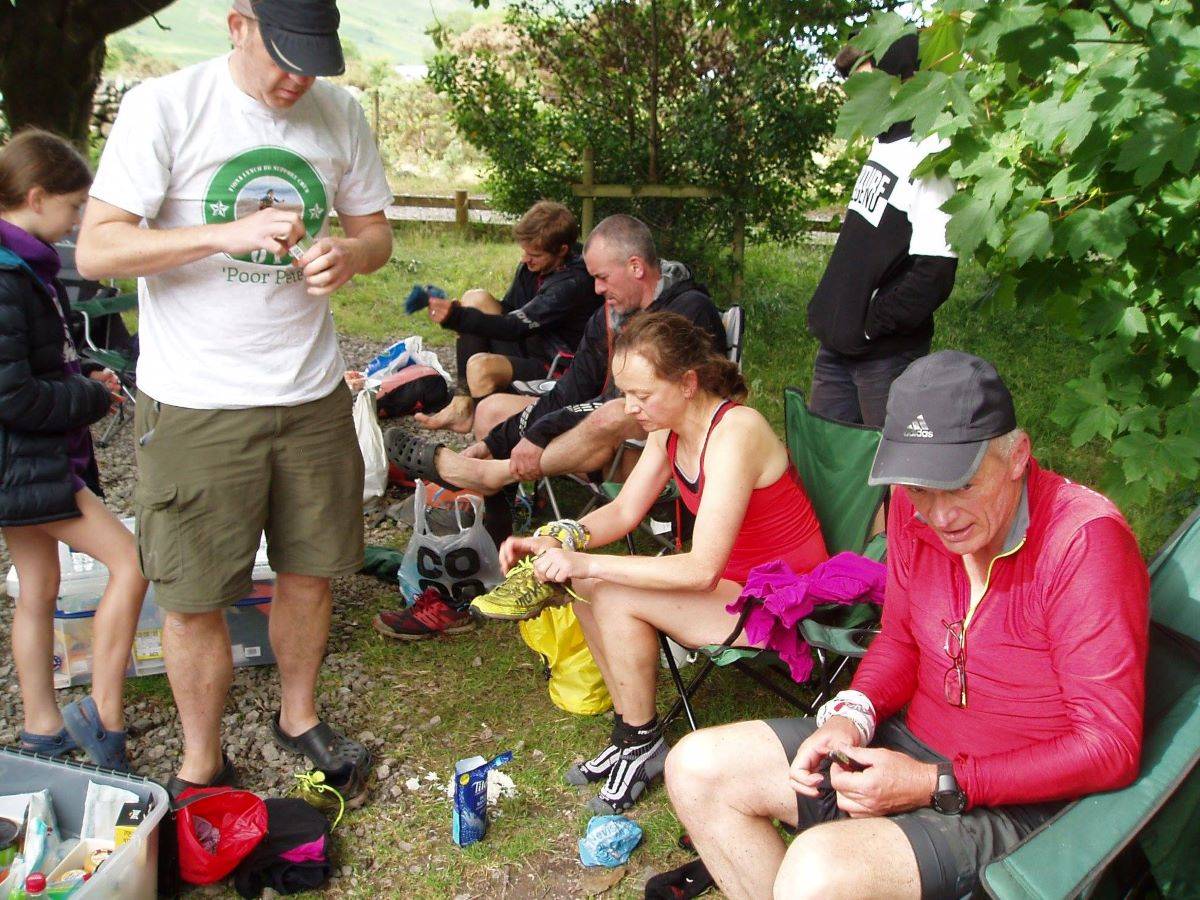
Fiona Lynch and Jim Paxman, both in red, with the rest of Lynch’s support crew in the village of Wasdale on the day of her Bob Graham Round. Photo courtesy of Fiona Lynch.
The Bob Graham 24-Hour Club, Past, Present, and Future
iRunFar spoke to Morgan Williams, former club Secretary who has witnessed first-hand a great deal of the club and the round’s evolution.
Williams told us about how getting to know a group of fell runners, while out hiking in the Lake District in his early 20s, led him to be bitten by the Bob Graham bug: “I suppose that’s where it all started. Like many people I did become gently, my family would say more than gently, obsessed. … I got my first pair of Walshes [fell shoes], because that was all we had then, it was 1984.”
In late July 1985, Morgan completed his Bob Graham Round. The friends he made, and the club he was now a part of, went on to be a huge part of his life.
Having returned to fell running after some time away, Williams assumed the position of club Secretary in 2005, which he held until about 2018. When he assumed the role, the operations of the club were still very much on paper. He took the initiative to start a simple website, and operate a Facebook page for greater ease of communication among members. That same website has grown and evolved over the years and is currently a treasure trove of information and statistics.
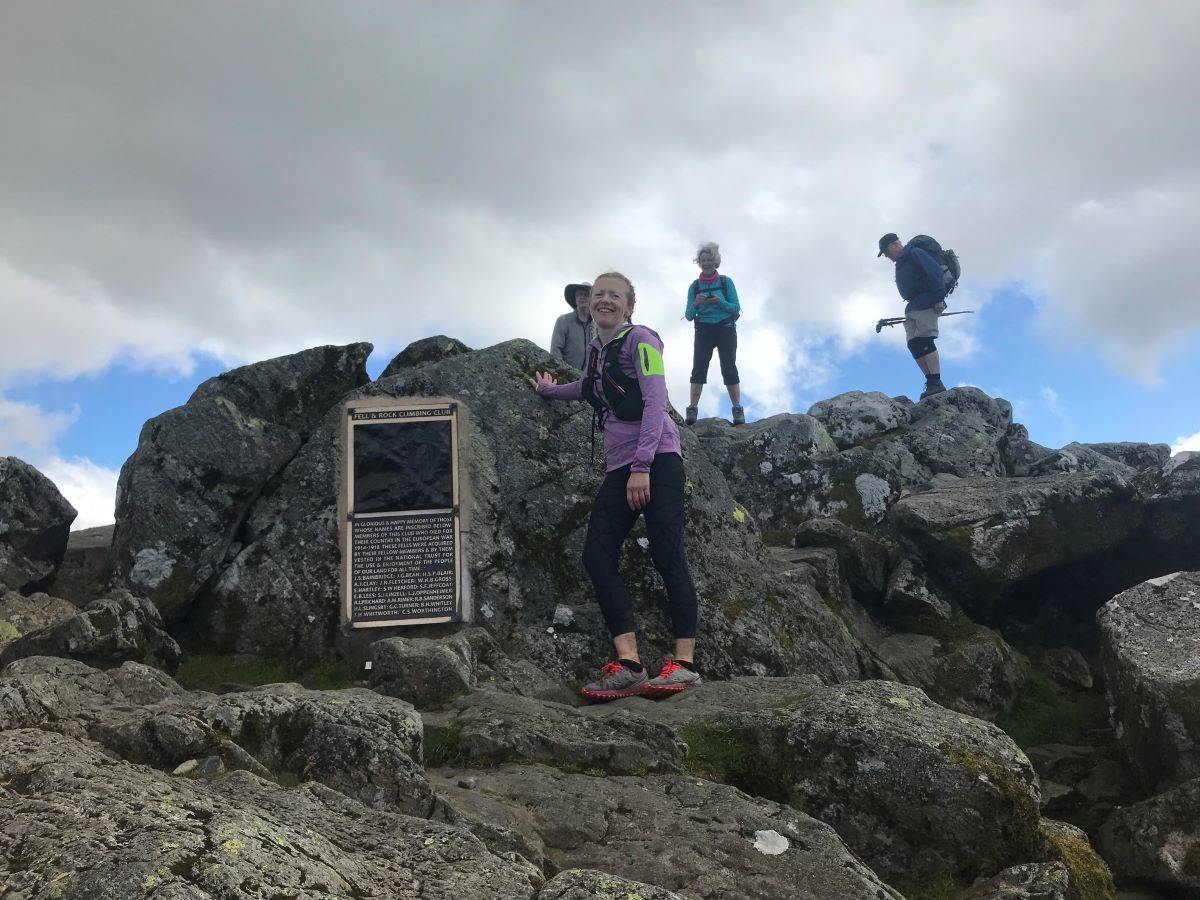
Current club Secretary, Angela Wilson, on the fell called Great Gable during her Bob Graham Round. Photo: Paul Wilson
The future of the Bob Graham Round faces a lot of the same challenges as many other beloved, off-trail routes. Routes that were once considered off the beaten track are now worn threadbare by foot traffic. As well as concerns for the effects on natural environments and safety, there are issues with parking and congestion arising from increased traffic on the route.
Nowadays, those pursuing round attempts are encouraged to do so mindfully and respectfully.
But regardless of what the future holds for the round itself, those brave and hardy folk who have completed their initiation will hold onto their lifetime membership of the legendary Bob Graham 24-Hour Club.
Call for Comments
- Are you a member of the Bob Graham 24-Hour Club? Leave a comment to share your experience with being a part of this community.
- What other noteworthy running communities would you like to see featured in this series? Are you a part of one? Leave a comment to tell us about yours!
